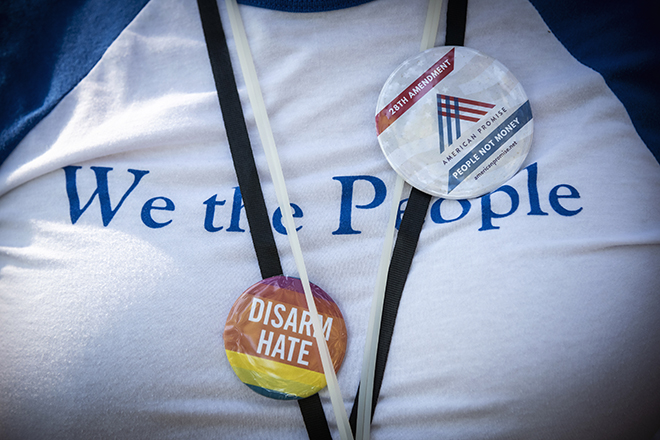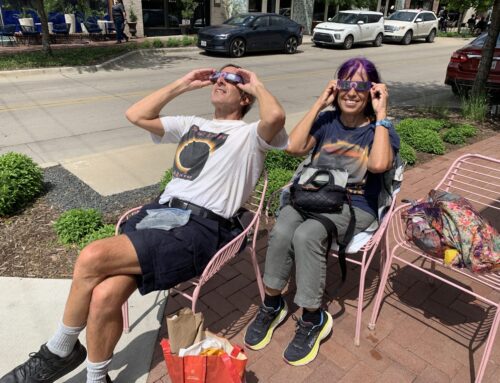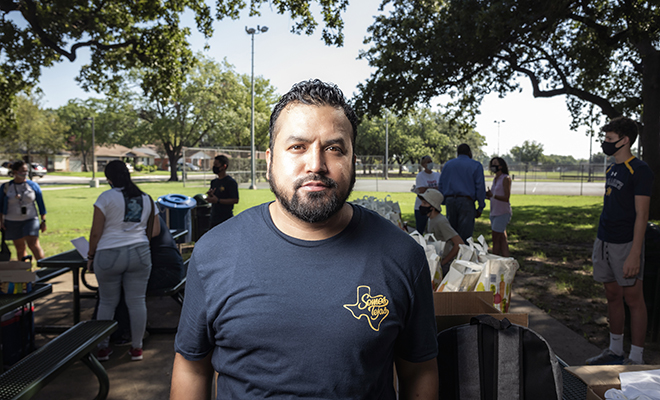
Ramiro Luna Hinojosa became an activist 12 years ago in support of “dreamers,” undocumented residents who immigrated to the United States as children.
Luna, who was reared in Oak Cliff, spent more than four years on “hard-core activism,” he says, going on a seven-day hunger strike, performing civil disobedience and getting arrested for the cause.
But when the proposed Development, Relief and Education for Alien Minors, or D.R.E.A.M. Act, failed by five votes in the U.S. Senate in 2010, he had a “shift in consciousness,” he says.
“We can do almost anything under the sun, and these elected officials are not going to change their minds. Their beliefs are fundamentally different from ours,” Luna says. “I thought, ‘Why don’t I get involved in trying to get them out of office?”
He spent a decade working on political campaigns, going after some of the most anti-immigrant politicians in America, including Maricopa County, Arizona, Sheriff Joe Arpaio, who was unseated in 2016. Luna also helped Democrat Victoria Neave win a long-held Republican seat in the Texas House of Representatives in 2017.
This year, the 36-year-old started Somos Tejas, a nonprofit that engages voters in overlooked neighborhoods.
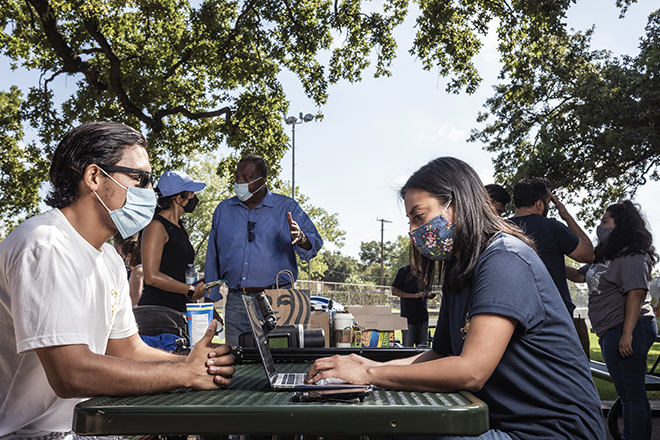
The idea behind Somos Tejas
I decided to take my 10 years of experience in campaigning and help create a nonprofit where we did campaigns but without a candidate, focusing on the ’hoods and the marginalized communities.
The goal of Somos Tejas
Ultimately, I want to see South Oak Cliff turn out just as much as North Oak Cliff. We want to see Pleasant Grove turn out just like a Highland Park precinct would. As a 10-year campaign manager, campaigns are not necessarily designed to focus on the precincts with the lowest turnout. I’ve seen that happen time and time again, and those were the same neighborhoods that I grew up in. To me that was always bothersome.
The basics
A lot of times there’s a big gap of knowledge to understanding basic information on why it’s important to vote, what City Council does, what state representatives do. Where do I need to vote? What does voting by mail look like? We’re nonpartisan. We don’t tell them who to vote for, but we explain how to vote and that voting is necessary.
Where they focus
We look at precincts that that have below 8% voter turnout, precincts that are typically 10% lower than neighboring precincts.
What they do
Our goal was to knock on more than 50,000 houses the first year, and then COVID hit, and we had to restructure ourselves. We took a break for several months, and then we started knocking on doors again [in June]. The same precincts we’re hitting are the same communities that are hardest hit by COVID, and it’s so telling about how this is systematically made this way. They’re the ones with less broadband, less access to fresh food, fewer resources overall. Our people have so many barriers to overcome, and I think one of the best ways to overcome them and uplift your voice is through voting and civic engagement.
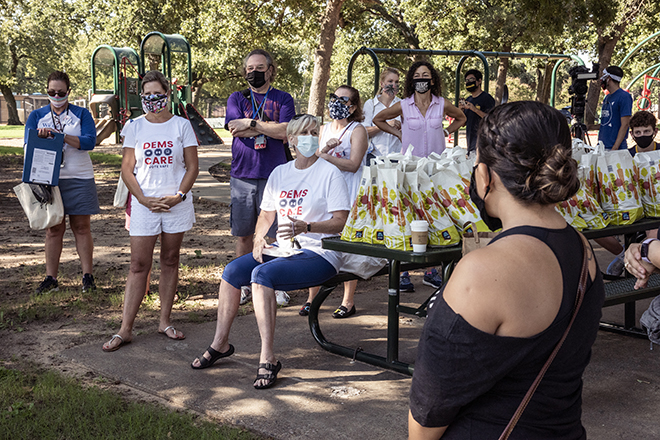
In the bag
We’re dropping off care kits with a surgical mask, hand sanitizer, a one-pager on COVID safety and information on voting and the U.S. Census.
How it’s funded
Typically if you run a campaign, you have a few thousand dollars at least to be able to purchase all of the things you need, so you can pay a team, pay for literature. For us, since it’s so new, and we’re not backing any candidates, everything is coming out of pocket. Everyone is working for free. I decided to get another job [this summer] because the resources are not there to survive. But eventually, I would love for this to be a fulltime job.
How you can help
We are always looking for any type of support. If you can’t donate, volunteer to block walk. If you have any other resources to provide: face masks, stickers, even coming out to events, sharing our work. Doing anything to spread the word.
